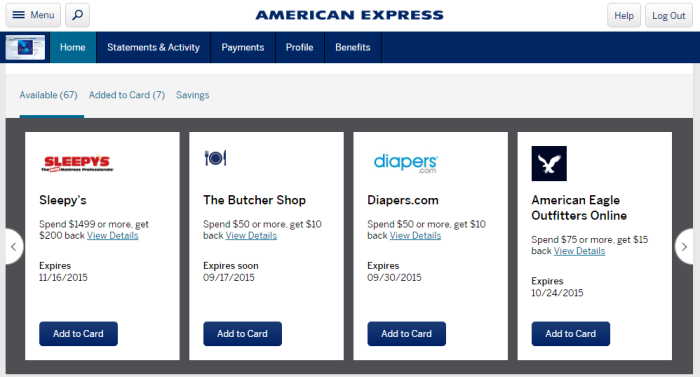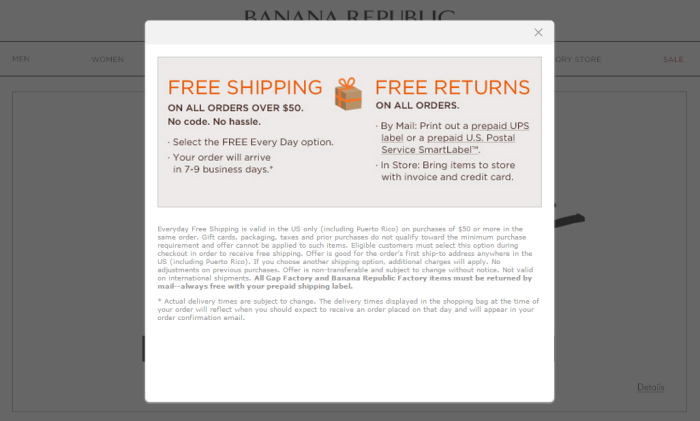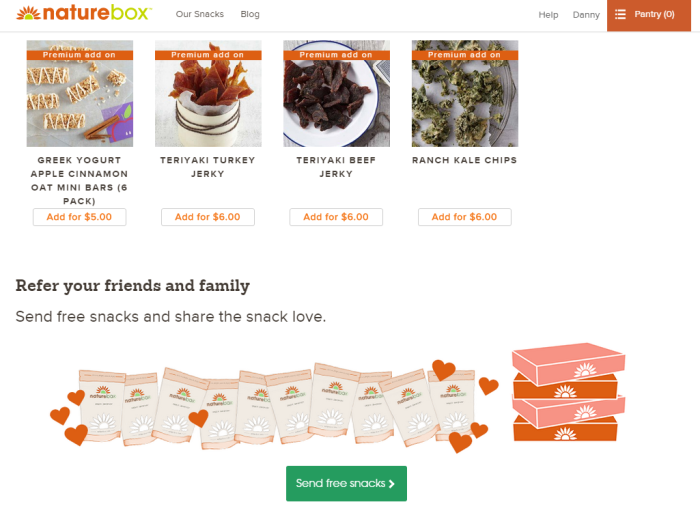Smart Strategies for Issuing Ecommerce Coupons
Consumers love coupons—and brands are eager to issue them.
Discounts and special offers make it easy to incentivize hesitant shoppers to finally pull the trigger. And they encourage past purchasers to place their second, third, or even tenth order.
However, the smartest stores are selective about how they distribute ecommerce coupons. Instead of slashing prices across the board, they share exclusive discounts with targeted consumers to secure more sales without compromising overall revenue and profit.

According to VoucherCloud, 91% of coupon redeemers suggest they’ll revisit retailers that offer coupons, 57% of shoppers insist they would’ve abandoned their purchase without a coupon, and 62% of consumers spend two hours each week searching for deals and special offers.
Stores that do issue coupons benefit in five ways:
- Boost customer happiness and shopper loyalty
- Support new customer acquisition
- Promote newly launched products and under-utilized services
- Encourage first-time product trials
- Offload excess inventory
While coupons are a clever tool store owners and marketers may use to improve critical KPIs, ecommerce managers may also be surprised by the effects a simple coupon can have on shoppers. Even the most modest discounts can convince otherwise prudent buyers to splurge.
This works best with products that shoppers can easily use two of. If two of the same thing offers little utility, few shoppers may consider your BOGO offer a worthy incentive.
1. The science behind ecommerce coupons and special offers
Coupons create happiness.
Interestingly enough, a study by Coupons.com and Dr. Paul J. Zak, Professor of Neuroeconomics at Claremont Graduate University found that coupon recipients were happier and more relaxed. In fact, the experiment participants who received a $10 coupon experienced a 38% increase in oxytocin levels and were 11% happier than participants who didn’t receive any coupon.
2. Discounts, free offers, and referral programs
Cash for credit
“Spend $50 and get $10 back towards your next purchase.”

To encourage repeat purchases, offer your customers an incentive to come back.
Get them to spend a lot now, so they save money later.

Instant discounts
- “Get $20 off your purchase of $100 or more.”
- “Save 20% on your total order over $40.”
Instant discounts come in dollar or percentage form and are known to decrease cart abandonment rates. Savvy store owners often set minimum order totals which help increase average order values too.

Free delivery both ways
“Free shipping and returns!”
Many consumers happily pay for the convenience of shopping in their homes, but they love it even more when retailers help them save money while doing it. But, to make sure customers earn their free shipping and return privileges, require shoppers to create a store account and fill out their profile (so you understand their preferences), sign up for your email newsletter (giving you permission to market to them), or pick up their order at a local store (to boost foot traffic).
According to Wharton at the University of Pennsylvania, “Approximately 60% of online retailers cite ‘free shipping with conditions’ as their most successful marketing tool.”

Gift with purchase
“Buy $75 worth of goods and get a free makeup kit.”
For brands that are wary of decreasing their prices, free gifts with purchase are another way to motivate customers to spend more while you offload excess inventory.
Tricia Carr, an editorial assistant for Luxury Daily, says, “Experts agreed that a gift with purchase is a great way to steer away from offering discounts that may deflect from sales goals.” For some shoppers, the offer of a free gift is also an unexpected and pleasant surprise.

Give a gift
“Send a friend $30 towards their first purchase and earn $30 when they complete their order.”
Give customers a reason to spread positive word about your brand. Brands like Bonobos, Julep, and NatureBox credit their customer advocacy and referral programs for much of their growth.

BOGO
“Buy one get one free.”
This works best with products that shoppers can easily use two of. If two of the same thing offers little utility, few shoppers may consider your BOGO offer a worthy incentive.

Post-purchase discounts
“As a special thanks for placing your last order, here’s 15% off your next purchase.”
Use post-purchase discounts to re-engage shoppers and drive repeat purchases. Data from Internet Retailer reveals that “94.83% of sales are single interaction.” Across all industries, only 5% of sales are from returning customers.

Although customers love getting a good deal, companies shouldn’t be overzealous when issuing coupons to customers. A conservative coupon strategy helps brands avoid attracting bargain hunters and training consumers to wait for a sale.
3. The perils of deep discounting
Groupon, the daily deals site, epitomizes couponing at its best and at its worst.
For consumers, the bargain couldn’t be better. Access to deep discounts can convince even the most wallet-shy shopper to spend.

For stores, the appeal of hundreds—even thousands—of new customers is powerful, but many risk selling to the wrong type of buyer, dangerously undercutting their margins and regretfully diluting brand equity. Brands that oversell their offer sometimes create excess demand that they can’t fully honor, which leads to bad reviews, unhappy customers, and a serious strain on their supply chain.
“At some point in recent years, 50% off became the new normal, with shoppers growing increasingly accustomed to dramatic markdowns—and correspondingly unimpressed with a measly 10% off,” writes business and personal finance reporter Brad Tuttle. He continues:
“Stores jacked up list prices so that the markdowns seemed even more tempting. Overall, the result is that shoppers are now addicted to discounts, and that retailers are struggling mightily to sell anything at close to full price. Viewing the discount-heavy model as a race to the bottom—and a confusing, inefficient one at that—some retailers are going cold turkey on major markdowns, even during the busy holiday shopping season.”
Both brick-and-mortar and online stores should recognize that indiscriminate discounting creates a lose-lose situation for retailers and their competition. Explains branding agency Killian Branding:
“For an established brand, discounting can have an adverse effect on value. Quality and price do not exist as isolated concepts in consumers’ minds. They are interrelated. Research has shown that deep discounts do cause the consumer to believe that something is wrong. Frequent discounting serves to lower the value of the brand because of an almost subconscious reaction by the consumer who believes that quality also has been lowered. Or, in a ‘value rebound,’ consumers begin to perceive the everyday price as too high. The brand is then bought only on deal.”
“Whole categories have been poisoned that way. Nobody expects to pay ‘full price’ for washers, or tires, or mattresses. Ever,” adds the team at Killian.
Though daily deal sites such as Groupon, Ruelala, and Hautelook were among the fastest-growing businesses on the internet, flash sales have since gone flat.
Consumers are now wise to artificial markups, second-rate inventory, and the fine print with each purchase. Brands also find that offering deep discounts merely boosts short-term revenue at the expense of long-term profits.
4. Ecommerce couponing done right
Many small businesses have partnered with Groupon and other flash sale sites, only to find themselves in a worse-off position than they were earlier. To leverage coupons to grow sales and customer loyalty, without sacrificing profit, Shopify’s Richard Lazazzera shares 14 tips:
- Issue end-of-quarter coupons to meet revenue goals.
- Drive consumer interest and signups by issuing coupons for products pre-launch.
- Share holiday offers to stay competitive during big shopping seasons.
- Get shoppers to complete their purchase with abandoned cart offers.
- Receive permission to market to your customers when you exchange their email for a coupon.
- Boost social media engagement with a special offer for new fans and followers.
- Create generous referral programs that allow loyal customers to earn store credit when they give away free stuff.
- Offer the right incentive to capture and convert first-time buyers.
- Businesses thrive off of higher average order totals; incentivize shoppers to keep adding items to their cart with volume discounts.
- Keep existing fans and followers engaged on social media by offering exclusive coupons straight to their news feeds.
- Reward customer loyalty with surprise coupons and earned credits.
- Right before shoppers leave, share an exit intent offer as a last resort to convince them to convert.
- Use retargeting offers to present relevant and timely ads to hesitant shoppers.
- Partner with influencers in your niche who can share a co-branded coupon their audience would happily redeem.
Four other tactics worth utilizing include:
- Create your own coupon page to boost SEO and capitalize on branded searches. You might be surprised by how many shoppers search for terms like “Zappos coupons.”
- Set expiration dates on offers to prompt recipients to redeem their coupon soon.
- Add special coupons to your receipts. With upsells, CM Commerce users earn $0.81 more with each email (instead of $0.08, the industry standard). To-date, we have helped more than 9,000 stores generate $1.75 million in extra revenue.
- Distribute coupons through exclusive partners. Examples include American Express and FoundersCard.

Wrap up
Clever store owners are selective about the types of coupons they issue and the customers they share offers with. They also leverage technology to measure the effectiveness of each coupon campaign by tracking average order values, conversions, profit per channel, and customer retention.
Ecommerce managers who avoid indiscriminate couponing and deep discounting can strategically acquire new buyers, build better relationships with existing customers, and increase total sales with thoughtful coupons and offers shoppers can’t refuse.